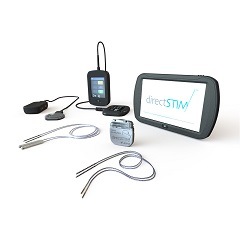
Aleva Neurotherapeutics has received a letter of approval from the US Food and Drug Administration (FDA) for an investigational device exemption (IDE) study assessing the company’s directSTIM directional deep brain stimulation (DBS) system—which is intended for use in major neurological indications like Parkinson’s disease and essential tremor.
The approved protocol has been designed to collect safety and efficacy data to support submission for a future premarket approval application.
This USA-based trial will include up to 15 US institutions and is set to feature recruitment of up to 136 American patients. The approval was granted—according to an Aleva press release—following an intensive exchange of information between Aleva and the FDA, whereby all safety tests and clinical data have been “scrupulously investigated”.
This authorisation follows the grant of a CE mark in Europe and initiation of an ongoing post-market clinical follow-up study in select European neurological clinics. Completion is expected in the next 30 months, the release adds.
“This is a pivotal milestone for Aleva, as we are fully committed to providing the benefits of our truly directional DBS system to US patients and the community of neurologists and neurosurgeons,” said Stefano Alfonsi, CEO of Aleva. “The North American DBS market is definitely the largest in volume and turnover, and we are convinced that the innovation provided by directSTIM combined with our vision will make a dent in this space.”
Aleva’s DBS system incorporates directional electrode technology that is designed to be more precise and efficient than currently available approaches. This is due to the fact that targeted stimulation has the potential to improve therapeutic benefits while reducing side-effects—according to Aleva, which also claims to be the only DBS company that provides 24 independent current sources in combination with the only lead that has 12 directional contacts, resulting in higher flexibility during surgery and the ability to personalise therapy to the patient’s evolving needs.













